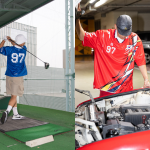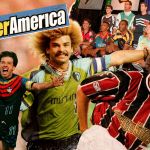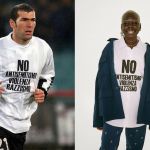
The aesthetic evolution of football tv programs
How much has changed since Pressing in the 1990s to the contemporary Sky Calcio Club?
February 24th, 2021
Before DAZN, Sky Go and OTT platforms, there was a time when sports comparison, in-depth study and specials were a fixed, temporary appointment, necessarily set. basically, when football talk shows were an institution. From the first television program on Rai - La Domenica Sportiva, in 1953 -, until the advent of Sky's On Demand video in 2009, football was broadcast with fixed weekly appointments. Over the decades, a universe of tv studios, armchairs, links, jokes, heated comparisons (all here, on YouTube) and many iconic faces has been created. It started with Enzo Tortora and passed for the jackets of Aldo Biscardi and the pendolino of Maurizio Mosca, up to the sober style of Sandro Piccinini and the contemporary show man-social model by Pier Luigi Pardo.
In thirty years the way of telling football on TV has changed in format and graphics. The studios, in fact, have evolved with new compositions and new tools, and the design of communication has also changed: now the audience has differentiated, every viewer can choose what to watch and, in a nutshell, each program works to address its personal average viewer. This is unlike in the past, when pay TV was still something niche and most tv users could watch football depth through the few programs that circulated on public television (not necessarily only on the generalist networks: there was a lot of talk about football also on local broadcasters). Football on television has created a nostalgia in the relationship between sport and the media, with programs that have become iconic in semiotics such as 90 minuto, Il processo del Lunedì (then Il processo di Biscardi), Dribbling, and again on Mediaset Pressing and Tiki Taka. In the 2000s, new autonomous companies such as the Sportitalia network grew and, with Sky, the evolution was completed with a different, more international style and with pre-established formats. From those audience-packed rooms to the touch screens of this decade, football in Italian television has a graphic history more than fifty years long
Logos
The logos of today's programs are different for reference technologies and communication contexts. Those of current football television programs are designed to be exposed and shared on social networks and to take on any dimension. Graphic optimization has been shaped on modern communication channels and they themselves often integrate with formats and hashtags typical of online communication. The old font of Pressing, a program that continues to be aired in 2018 after closing in the 2000s, is deeply television. It has gradient colors and subtle strokes, reflecting a minimalist font type that at the time was very progressive, almost more elegant than the pompous and flashy models of other programs of generalist television. The aesthetics changed over the course of the 2000s with other programs such as ControCampo, in which the most bold and flashy graphics wanted to recall the type of program you were going to watch - the analysis, the debate, the wetting inside the studio.
Tiki Taka, like Sky Calcio Show, used more vivid colors and an almost summery font instead; it also emphasizes the cheerful spirit of the program, with the presence of wags and funny characters who define a sympathetic, playful, lively but not heavy information content. Sky's broadcast programs, unlike, have a graphical approach in the logo that responds to an international format decided by the company; for example, for boban's study, the logo reflects the tones and content of the program. While it remains more minimal and almost exclusive that of Sky Calcio Club, to emphasize the idea of proposing an in-depth football analysis show (with almost all former great footballers) in the second evening.
The jingle
The Studios
The only element that has always remained central to football television programs is the big screen, which since its entry (not in maxi version) in the sixties has always been maintained for connections and services. Now it is even more central to the progress of the program's lineup, and now, to have a lot of attention are the social workstations, with touch screens and new professional figures specially chosen for that type of work. The studio expands, yet the audience has shrunk - in the last two years, also due to coronavirus.












































